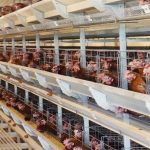Poultry farming is a thriving industry, crucial for meeting the global demand for eggs and meat. Among various farming techniques, the battery cage system stands out for its efficiency and productivity. However, a critical aspect that every poultry farmer must consider before adopting this system is the cost. This article delves into the factors influencing the cost of the battery cage system in poultry farming, offering valuable insights for potential investors.

What is a Battery Cage System?
Battery cage systems are intensive poultry farming methods where chickens are kept in rows of identical cages. This system is primarily used for laying hens to maximize egg production. The cages are designed to optimize space, improve hygiene, and facilitate easy monitoring and management of the birds.
Factors Influencing the Cost of Battery Cage Systems
Understanding the cost of battery cage systems involves examining several key factors:
1. Material and Quality
The material used in constructing battery cages significantly impacts their cost. High-quality materials like galvanized steel are preferred for their durability and resistance to corrosion. Although the initial investment may be higher, these materials reduce long-term maintenance costs. Investing in robust materials ensures longevity and minimizes the need for frequent replacements, ultimately saving costs over time.
2. Size and Capacity
The size and capacity of the battery cage system directly affect its cost. Larger cages with higher capacity accommodate more birds, enhancing productivity but requiring a higher upfront investment. It is crucial to balance the desired capacity with the available budget, considering the specific needs and goals of the poultry farm. Consulting with experts can help determine the optimal cage size and capacity that aligns with both productivity goals and financial resources.

3. Automation and Additional Features
Automation levels and additional features integrated into the battery cage system significantly influence its cost. Features such as automated feeding and watering systems, egg collection systems, and environmental control systems enhance efficiency and reduce labor requirements. While these advancements increase the initial investment, they can lead to long-term cost savings through improved productivity and reduced labor expenses.
4. Maintenance and Operational Costs
Apart from the initial investment, maintenance and operational costs are crucial considerations. Routine cleaning, disinfection, and maintenance of the cages are essential for ensuring bird health and productivity. Additionally, factors such as electricity costs for lighting, heating, and ventilation, as well as expenses for feed and water, should be accounted for when calculating the overall cost of battery cage poultry farming.
Cost Estimates for Battery Cage Systems
To provide a clearer picture, let’s explore estimated costs for setting up a battery cage system in a medium-sized poultry farm:
- Cage Units: The cost of chicken cages can range from $100 to $300 per unit, depending on materials and design. For a farm with 10,000 birds, approximately 70 groups of 144-bird cages may be needed, translating to a cost of about $7,000 to $21,000.
- Infrastructure and Housing: Building structures to house the cages, including amenities like water and electricity, can add $10,000 to $18,000 to the total investment.
- Feeding and Watering System: Installing efficient systems is essential for successful farming. Expect to spend around $1,000 to $1,500 on reliable systems.
- Operational Expenses: Ongoing costs like feed, veterinary care, and labor must be considered. Feed is a significant expense, so efficient management is crucial.

Advantages of Battery Cage Systems
Battery cage systems offer several benefits that justify their cost:
- Increased Egg Production: Hens in battery cages can produce up to 10% more eggs due to the controlled environment.
- Reduced Feed Costs: The system prevents hens from exercising, making them more efficient at converting feed into eggs.
- Reduced Labor Costs: Automation in feeding, watering, and cleaning reduces labor requirements.
- Improved Biosecurity: The system minimizes contact with other animals, reducing disease risks.
Conclusion
Investing in a battery cage system for poultry farming can be a significant decision, and understanding the associated costs is crucial for making informed choices. By carefully evaluating factors such as material quality, cage size and capacity, automation features, and operational expenses, poultry farmers can determine the most suitable system that aligns with their budget and goals. Seeking guidance from reputable manufacturers and conducting comprehensive feasibility studies can optimize investment and ensure success in battery cage poultry farming.
Call to Action
Are you considering investing in a battery cage system for your poultry farm? Explore more insights and connect with industry experts to make the best choice for your farming needs. Share this article with fellow farmers to spread awareness and help others make informed decisions.






